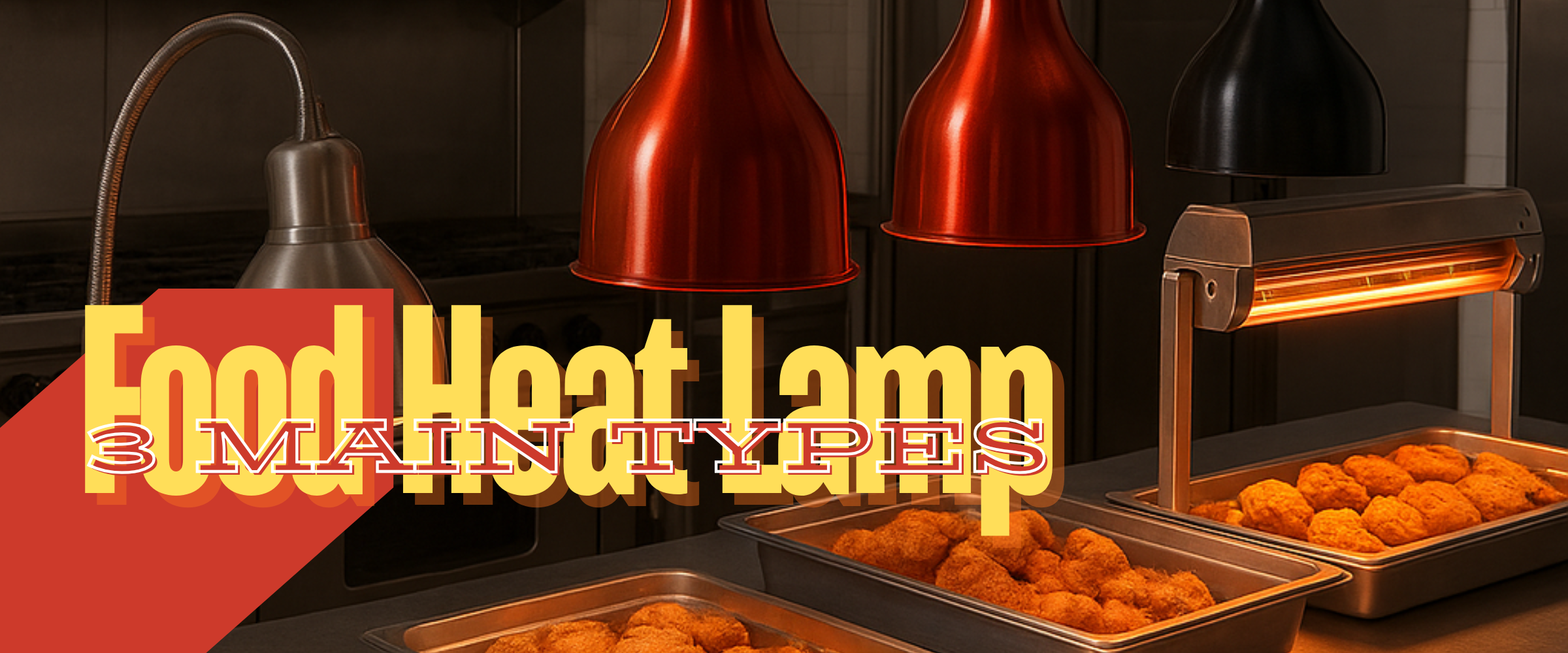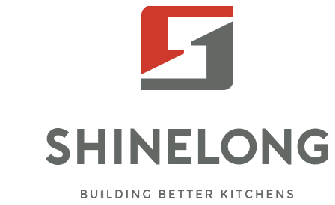News
Food Heat Lamp Buying Guide: Understanding the 3 Main Types

In fast-paced food service environments, the final step before a dish reaches a guest is critical. A well-designed food heat lamp keeps plates at serving temperature, preserves texture and appearance, and helps kitchens maintain food safety standards. This article explains the three most common types of food heating lamps—portable lamps, overhead/pendant lamps, and strip (infrared bar) lamps—how they work, where to use them, and what to consider when selecting a commercial heat lamp for food for your operation.
Why food heat lamps essential for restaurants
Food heating lamps are more than visual props—these devices use radiant infrared heat to maintain surface temperature without greatly raising internal moisture loss. Keeping food above the food-safety threshold (commonly cited as 140°F / 60°C for hot holding) reduces bacterial growth and helps dishes stay appetizing while waiting to be served. Choosing the right type—whether a portable food heat lamp for a carving station or a long strip lamp for a buffet—directly impacts energy use, food quality and speed of service.
The three common types of food heat lamps
1. Portable food heat lamps
Portable heat lamps are freestanding units, typically with an adjustable head and a single or twin lamp design. They’re compact, plug-and-play and are used where flexibility and mobility matter most.
Key features & advantages:
- Easy relocation—ideal for catering, pop-up stations, and carving or plating areas.
- Adjustable height and angle control heat intensity at the point of service.
- Low installation cost—no permanent mounting or electrical rewiring.
Best use cases:
- Catering and buffet carving stations.
- Temporary or seasonal service counters.
- Food trucks and small kitchens needing a compact lamp heater for food.
2. Overhead / pendant food heat lamps
Pendant or overhead lamps are mounted above pass-through counters, plating stations, or service lines. They create an even, stable heat field and integrate cleanly into fixed kitchen layouts.
Key features & advantages:
- Consistent coverage for single counters or multi-plate pass-throughs.
- Sleek aesthetic—available in decorative finishes for front-of-house visibility.
- Reduces clutter on counters compared with freestanding portable lamps.
Best use cases:
- Restaurant pass-throughs where chefs place finished plates for servers.
- Plating stations that require consistent holding temperatures.
- Open kitchens where visual presentation and function both matter.
3. Strip / infrared bar food heat lamps
Strip or infrared bar lamps are long, linear units with multiple heating elements—designed for wide coverage along buffet lines or food display counters. They’re the workhorses for volume service.
Key features & advantages:
- Wide, even heat distribution across multiple pans or trays.
- Often energy-efficient infrared elements with longer bulb life.
- Durable, continuous-operation design suited for high-volume use.
Best use cases:
- Buffet serving lines and cafeteria stations.
- Catering assembly lines where multiple pans must be held simultaneously.
- Any application needing even heating across a long surface.
How these heat lamps work
Most food heat lamps use infrared radiant heat—halogen or specially designed infrared bulbs produce light in wavelengths that deliver warmth to the surface of food without dramatically increasing airflow or moisture loss. Unlike enclosed food warmers that trap humidity to keep food moist, heat lamps provide direct radiant heat and are therefore best-suited for items that benefit from surface warmth and crispness (fried foods, roasted meats, plated entrees).
Choosing the right commercial heat lamp for food
When evaluating options, consider the following:
- Application: Are you holding plated entrees, keeping trays hot on a buffet, or operating a mobile station?
- Coverage area: Match lamp width and number of elements to the pans or plates you need to cover.
- Mounting & layout: Portable vs. fixed installation affects traffic, aesthetics and countertop space.
- Bulb type and wattage: Infrared-rated, food-safe bulbs deliver best performance; wattage determines intensity—choose to avoid over-drying.
- Energy & cost: Compare bulb life, replaceable elements, and the expected duty cycle for your service environment.
Comparison table
| Type | Mobility | Best for | Coverage |
|---|---|---|---|
| Portable heat lamp | High | Catering, carving stations | Small–medium |
| Pendant/overhead lamp | Medium | Pass-throughs, plating | Medium–large |
| Strip / infrared bar | Low | Buffets, high-volume lines | Large/wide |
Maintenance & safety tips for food heating lamps
Proper maintenance ensures performance and safety:
- Regular cleaning: Unplug and cool lamps before wiping reflectors and housings. Grease and dust reduce efficiency.
- Bulb replacement: Replace bulbs promptly when dim or flickering to maintain even heat.
- Safe distance: Maintain manufacturer-recommended clearance—usually about 10–14 inches above food—to avoid drying or overheating.
- Electrical safety: Ensure permanent units are installed by a qualified electrician and that portable units have grounded cords and appropriate outlets.
Common mistakes to avoid
- Using standard incandescent bulbs—only use bulbs rated for food warming and infrared output.
- Overheating food—constantly monitor temperature to avoid drying or quality loss.
- Neglecting cleaning—dirty reflectors lower radiant efficiency and increase energy use.
FAQ
How long can food stay under a heat lamp?
Holding times vary by food type and moisture. Generally, aim to serve within 1–2 hours and monitor temperature to keep hot-held items above 140°F (60°C). For best quality, rotate and replenish food rather than rely on indefinite holding.
Are food heat lamps energy-efficient?
Modern infrared lamps and halogen bulbs are reasonably efficient for their purpose. Strip infrared systems are typically more efficient for wide coverage than multiple portable lamps running simultaneously.
Can I use a regular lamp bulb for food warming?
No. Regular bulbs don’t emit the correct infrared wavelengths and can pose safety and food-quality problems. Use bulbs specifically labeled for food warming or infrared heat lamp use.
 After-Sales:
After-Sales:
 EN
EN
 AR
AR
 HR
HR
 NL
NL
 FI
FI
 FR
FR
 DE
DE
 EL
EL
 HI
HI
 IT
IT
 PT
PT
 RO
RO
 RU
RU
 ES
ES
 TL
TL
 ID
ID
 SL
SL
 VI
VI
 ET
ET
 MT
MT
 TH
TH
 FA
FA
 AF
AF
 MS
MS
 IS
IS
 MK
MK
 HY
HY
 AZ
AZ
 KA
KA
 UR
UR
 BN
BN
 BS
BS
 KM
KM
 LO
LO
 LA
LA
 MN
MN
 NE
NE
 MY
MY
 UZ
UZ
 KU
KU









